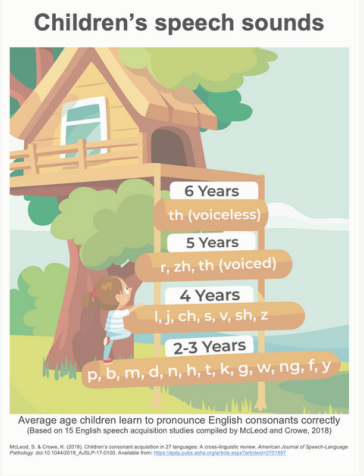Development of Speech Sounds
1st November, 2023By Robynann William, speech pathologist & orofacial myologist
Children across the world acquire consonants at a young age. Five year old children have acquired most consonants within their ambient language.
This chart shows the average age children learn to pronounce consonant sounds. There is a developmental order starting with lip sounds (p, b, m, and w), then tongue-tip sounds (t, d), then posterior tongue sounds (k, g, and ng), then fricative and affricative sounds (s, z, sh, ch and j). The most difficult consonant to acquire is the voiceless th sound as in thumb.
This is a similar developmental sequence of a baby learning to sit, crawl and walk. More complex patterns of motor movements and co-ordination are required with each step.
A cross-linguistic review was undertaken of 60 articles describing 64 studies of consonant acquisition by 26,0007 children from 31 countries in in 27 languages (including Afrikaans, Cantonese, Danish, French, German Icelandic, Japanese, Slovenian, Spanish and Swahili.) (McLeod S and Crowe K 2018 ). This study also showed that most of the worlds consonants were acquired by 5 years and in the same developmental order.
Most languages have words for mummy, daddy and grandparents that use the early developing consonants. E.g. mummy, daddy poppy, pa, nanna, in English
Mere, papa in French
Mor, far in Danish
Madre, padre in Spanish
Mama, papa in Dutch.
Speech Pathologists assess and treat speech disorders when this normal pattern of development does not occur.
share this entry








